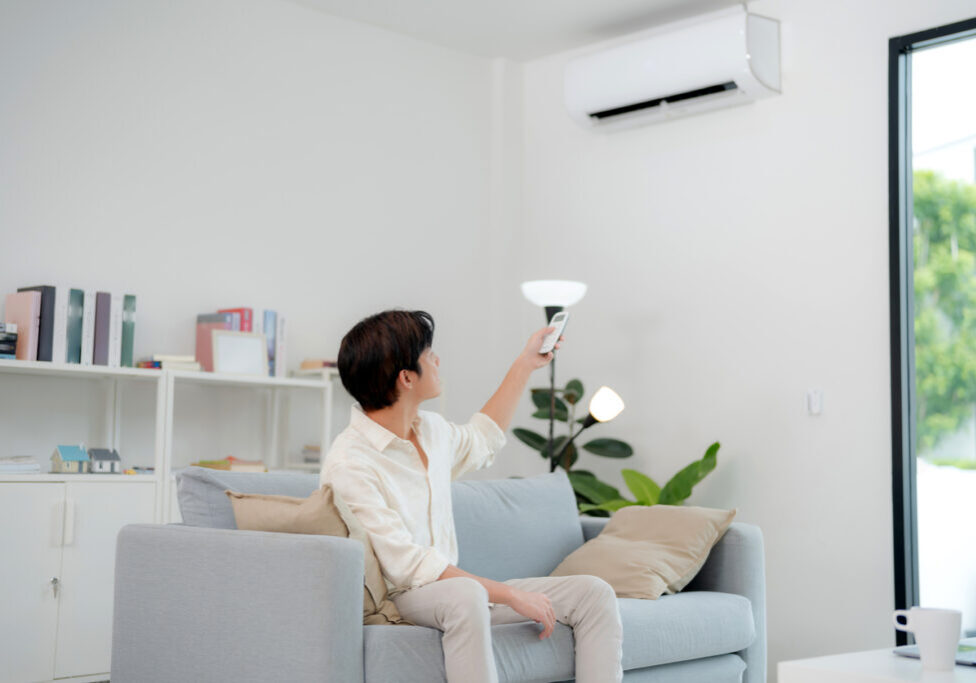Avoiding Common Ductless Mini Split Issues: How to Keep Your System Running Smoothly

Ductless mini-split systems are popular for their efficiency and flexibility, but like any home appliance, they need a bit of care to keep running smoothly. If you’ve ever turned on your system only to be greeted by weird noises, poor airflow, or even leaks, you know the frustration that can come with these issues. The good news is that many of these problems can be avoided with simple maintenance. By taking a few steps to care for your mini-split system, you can enjoy comfort in your home without unexpected surprises. Let’s break down some essential maintenance tips that will help you sidestep the common pitfalls and ensure your system stays in top shape.
To avoid common issues with ductless mini-split systems, regularly clean both the indoor and outdoor units to prevent dust and debris buildup, ensure proper airflow by keeping areas around the outdoor unit clear, and schedule professional maintenance at least once a year. Additionally, monitor your refrigerant levels and check for any unusual noises or smells that may indicate underlying problems, addressing them promptly can help maintain optimal performance.
Common Issues in Ductless Mini Splits
One of the most common issues faced by ductless mini-split systems is the lack of cooling or heating. This can often be linked to refrigerant leaks or dirty filters. Imagine coming home after a long day only to find your system isn’t providing the comfort you expected; it’s frustrating.
To avoid such situations, regularly check for and seal any potential leaks, along with cleaning or replacing the air filters every month. This can significantly restore functionality and efficiency.
Strange Sounds
Another indicator that your system might be in distress is unusual noises, like rattling or hissing. These sounds usually signal debris caught in the system or loose components needing immediate attention. Ignoring these noises could lead to more significant problems, such as mechanical failures.
If you hear an unfamiliar sound, take the time to investigate right away—your foresight will save you from costly repairs down the line.
Water Dripping
Water leakage is another nuisance that can plague ductless mini-splits. This typically occurs due to clogged drain pipes or a malfunctioning condensate pump. Picture yourself noticing water pooling beneath your unit; it’s unsettling, isn’t it?
A practical solution for this problem involves using a shop vacuum to clear any blockages in your drain pipes. Ensuring proper water flow is key not only for preventing leaks but also for maintaining system performance.
Weak Airflow
To mitigate this risk, establish a routine where you clean or replace air filters regularly—ideally every 1-3 months, depending on usage. This simple task can breathe new life into your system and enhance its performance.
Having identified these common issues, let’s now look at how you can implement effective strategies to keep your system operating smoothly and reliably.
Effective Maintenance Tips
Regular maintenance is pivotal in prolonging the lifespan of your ductless mini-split system and ensuring optimal performance. Think of it as an ongoing relationship; the more time and effort you devote to it, the better rewards you will reap. One of the most critical aspects is scheduling routine inspections every six months. These inspections are like your system’s check-up, allowing a qualified technician to spot early signs of trouble, such as refrigerant leaks or blockages. Just like you wouldn’t ignore a warning light on your car dashboard, keeping an eye on your mini-split can prevent larger problems down the road.
Temperature Settings
In addition to inspections, pay attention to how you use your system daily. Avoid extreme temperature settings by setting your thermostat within a moderate range. This simple action makes a considerable difference; maintaining moderate temperature settings can extend the life of your unit. Picture it: your ductless mini-split happily whirring along at a comfortable 72 degrees instead of struggling against drastic changes.
Professional Check-ups
While DIY care is essential, never underestimate the value of professional assistance. Scheduling annual check-ups from a qualified HVAC technician is crucial for maintaining efficiency and safety.
Cleaning
On top of inspections and professional check-ups, regular cleaning should be high on your priority list. Specifically, focus on filters and coils. Clean filters enhance air quality and improve airflow, while clean coils allow your system to operate efficiently. Just imagine how refreshing it feels to open a window during spring cleaning—your mini-split craves that same attention! If filters are clogged, it forces the system to work harder, thus increasing energy consumption and potentially leading to breakdowns. So, make it a habit to check those filters every month and clean them as necessary.
The cumulative effect of these proactive measures ensures not just peak performance but also extends the life expectancy of your ductless mini-split system significantly.
With diligent care in place for your current system, let’s now shift our focus to creating a quieter environment that enhances comfort without compromising functionality.
Noise Reduction Techniques
Noise from ductless mini-splits can often be more than just a slight annoyance; it can impact your comfort and overall enjoyment of your living space. One primary contributor to these disruptive sounds originates from loose parts within the unit. Therefore, it’s imperative to regularly check and tighten any components that may have become loosened over time. By monitoring these elements, you can drastically decrease noise levels and improve both your system’s efficiency and longevity. A simple twist with a screwdriver or wrench may be all that’s needed to make significant improvements.
In addition to securing loose parts, utilizing vibration-absorbing pads is an effective strategy for noise reduction. These pads, positioned beneath the outdoor unit, work diligently to dampen vibrations that could otherwise resonate throughout your home. The beauty of this solution lies in its simplicity—an easy installation process coupled with substantial benefits to sound reduction. It’s a win-win situation that ensures you’re not only cozy when cooling or heating your home but also keeping things quiet.
Placement Matters
Speaking of placement, how you position the outdoor unit can make a world of difference. Install the unit on a solid, level surface—this is essential for minimizing noise levels. Think of unstable or uneven ground as a recipe for amplified sound; it’s like placing a delicate glass figurine on a wobbly table—inevitably, something will give way under stress. For optimal performance and reduced noise, ensure the ground is stable, as this directly correlates to how well vibrations are managed by the mini-split system.
Further enhancing comfort can involve creative solutions like erecting sound barriers—fences or walls placed around your outdoor unit can provide additional noise reduction benefits. Such barriers absorb and deflect noises while offering an additional layer of separation between outdoor chaos and indoor tranquility. However, while doing so, be vigilant; ensuring airflow is not obstructed is crucial for the efficiency of your ductless mini-split system.
With these mindful adjustments in place, you’re well on your way to creating a more peaceful indoor atmosphere. Now, it’s time to turn our attention to another critical aspect of home comfort—detecting issues that could disrupt your system’s efficiency.
Cleaning Filters and Drains
Having clean filters is pivotal to ensure that your mini-split operates smoothly. It’s not just about the air quality in your home, but it’s also about how hard your system has to work. When the filters become clogged with dust and debris, your HVAC system will struggle to function efficiently, driving up energy bills and leading to wear-and-tear on the machinery. This straightforward cleaning task can become a regular part of your maintenance routine.
Cleaning Filters
The first step in ensuring optimal performance starts with cleaning the filters. This straightforward process requires attention to detail. First, it’s essential to turn off the unit—doing so ensures safety and prevents any damage during cleaning.
After the unit is switched off, carefully open the front panel and gently remove the filters, taking care not to bend or damage them.
Once removed, place them in a tub or sink filled with mild soap and water. Allow the filters to soak for a few minutes while you do other tasks around your home, then scrub them gently to remove any stubborn grime. Remember, never use harsh chemicals as they can damage the filter material. Once cleaned, ensure that the filters are allowed to dry completely before reinserting them into the unit—a critical step that prevents excess moisture from lingering inside.
Regularly checking your filters every four to six weeks for dust collection is a good practice; however, consult your owner’s manual for specific guidelines pertaining to your model.
Cleaning Drains
Equally important is maintaining clean drain lines since clogged drains can lead to water pooling inside or outside your unit, fostering mold growth and creating unpleasant odors. To clean your drain lines effectively, make it a habit to check these systems at least once a month.
A simple yet effective method for keeping drains clear is to use a mixture of bleach and water—this combination is excellent at eliminating unpleasant bacteria or mold buildup. Pour this mixture down each drain line, allowing it to sit for about 30 minutes before flushing it with fresh water.
Not only does this help maintain cleanliness, but it also keeps those drain lines flowing freely which safeguards your investment in a mini-split system—avoiding potential damage caused by mold or overflowing drains.
Maintaining these essential components significantly affects overall efficiency; now let’s explore some additional strategies that contribute to improving operational effectiveness within your system.
By including these practices in your routine care for your ductless mini-split system, you’ll not only maintain its peak efficiency but also enjoy comfort while safeguarding against future costs.
In conclusion, prioritizing these essential maintenance tips will keep your system running efficiently and save you money in the long run. For further assistance or to explore energy-efficient options, visit Diamond Comfort or call (413) 527-4737 today.
Have Any Questions?
Get in contact with us today! We are always happy to help, and you can count on our expertise.

